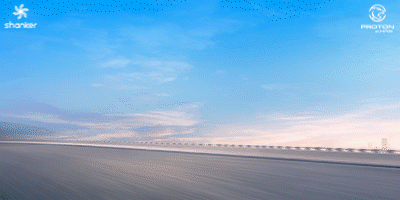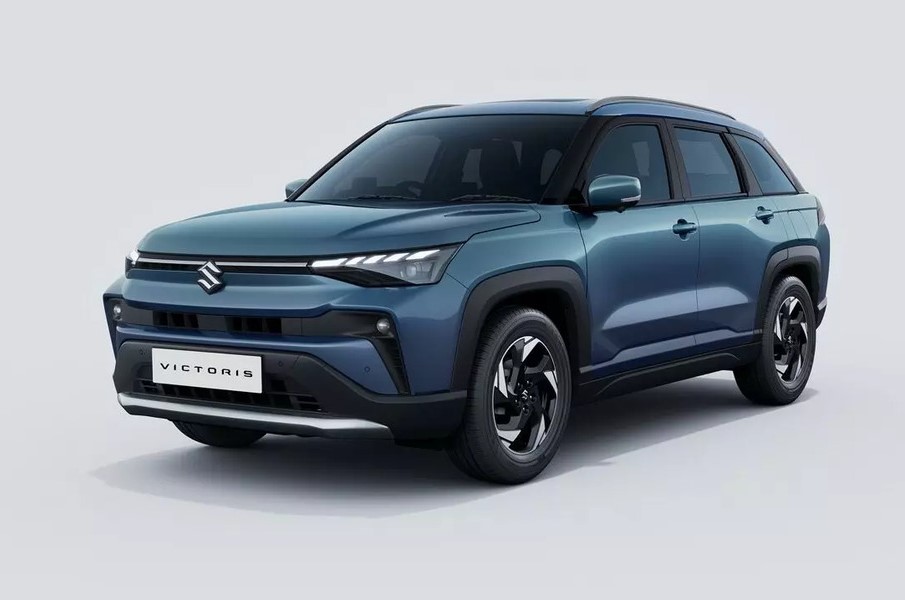Pros
- Aggressive Forward Leading Styling
- Sporty Dual Tone Graphics
- 184cc Torque-Heavy HET Engine
- Light and Agile Riding Posture
- Golden Upside Down Front Fork Suspension
Cons
- No Bluetooth Connectivity
- Lack of Radial Tyre
- Extra Sixth Gear Should Have Been Included!
- Single-Channel ABS
This is a detailed review of the new Honda Hornet 2.0.
Honda Hornet 2.0 received widespread criticism when it launched with its high asking price. Many dubbed it as being “overpriced”, despite never seeing it in the flesh.
Unfortunately, we were among the many to commit the same mistake. However, things have changed now.
Bikes are getting expensive.
Almost every bike and scooter have climbed up a step or two in terms of price segments.
With growing prices and inflation, the Hornet 2.0 pricing has stayed the same since its introduction to the Nepali market two years ago.
However, the stigma surrounding the motorcycle is yet to change.
So, let’s leave the Rs. 4.98 Lakhs price out of the equation for now. Let’s judge the Honda Hornet 2.0 based on what it brings to the table.
Can the Honda Hornet 2.0 redeem itself solely on its value? Will this be the redemption arc for the Honda Hornet 2.0?
We will try to find those answers in this review article.
This is the Honda Hornet 2.0 Full Review!
Honda Hornet 2.0 Specifications
- Engine Type: Single-Cylinder, SI, 4-stroke, FI
- Emission Standard: BS6
- Displacement: 184.40 cc
- Cooling System: Air Cooled
- Starting Mechanism: Self-Starter Only
- Max Power: 17.26 PS at 8500rpm
- Max Torque:16.1 Nm at 6000rpm
- Gearbox: 5-Speed
- Top Speed: 130 Kmph
- Fuel Tank Capacity: 12 liter
- Mileage: 45 kmpl
- Front Tyre: Disc
- 110/70-17
- Rear Tyre: Disc
- 140/70-17
- Tubeless Tyres: Yes
- Braking System: Single-Channel ABS
- Suspension Setup: USD Forks and Mono Shock suspension
- Seat Height: 790 mm
- Ground Clearance: 167 mm
- Kerb Weight: 142 kg
- Colors: Black, Grey, Blue, Red
Honda Hornet 2.0 Price in Nepal: Rs. 4,98,900
ALSO READ: Honda Hornet 2.0 First Ride: Shot at Redemption
Honda Hornet 2.0 Overview
Compact Design
Honda Hornet always had an all-to-familiar styling.
That core part hasn’t changed. However, Honda has refreshed the Hornet 2.0 styling a bit, pumping up its modern appeal.
There are subtle redesigns almost everywhere.
It sports an aggressive styling with sportier dual-tone graphics. It looks sharper than before, ensuring the expression of dominance and aggression.
The overall profile has shrunken to give a more compact profile.
Honda has dubbed this design philosophy as a “Forward-Leaning Design”. It is the same design philosophy that inspired the new Honda CB300F.
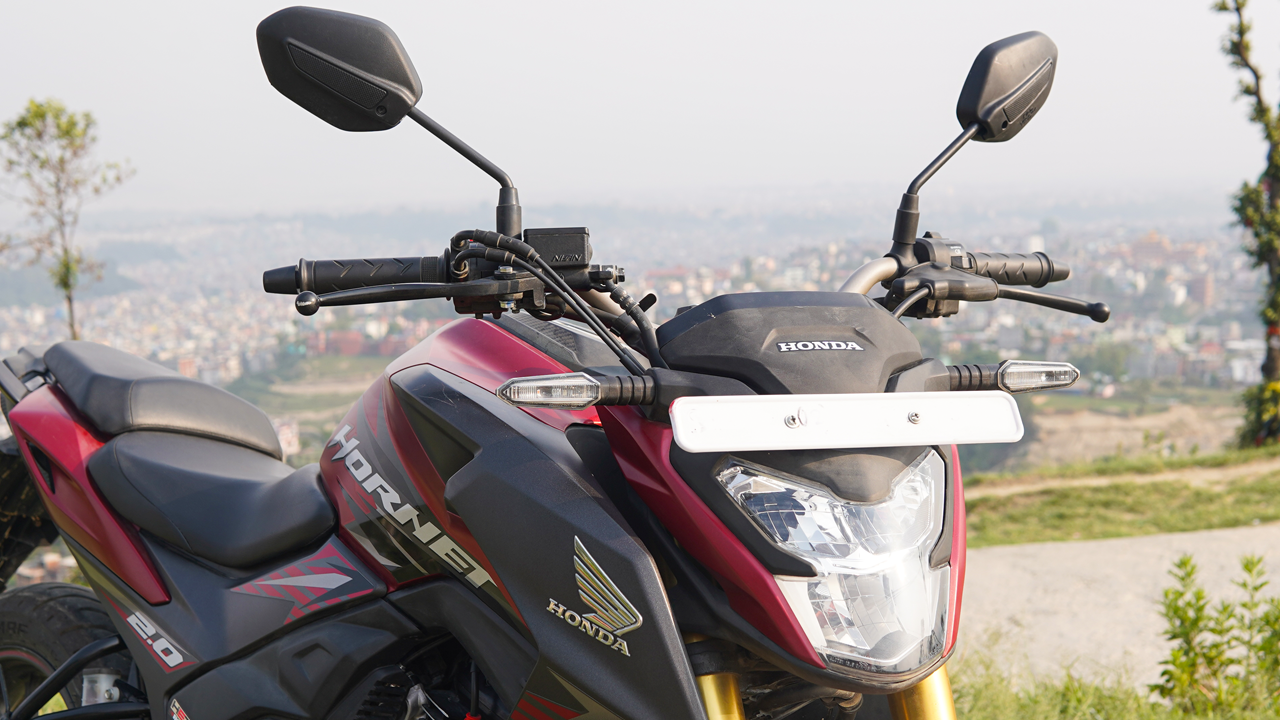
Let’s put our focus on Hornet 2.0.
The front section is shrunken down a bit, whereas the rear portion has been bulked up. Moreover, the build and finish have drastically improved.
The street-fighter stance goes well with its Split-Seat Setup, Engine Cowl, and Aerodynamic Edges with functioning Air Intakes.
Hornet 2.0 gets an all-LED treatment, sporting an all-new LED headlamp, LED indicators, and X-shaped LED tail lamps.
The nighttime visibility is only decent.
If Honda updates this in the future, the headlamp does need a brighter and wider update.
Other practical updates include a Hazard Light Switch and Engine Kill Switch. These elements help elevate the styling and practical nature of the motorcycle.
Moving on to another circumstantial change, the suspension setup.
Hornet 2.0 has ditched the standard Telescopic Fork for a premium Golden Upside Down (USD) Front Fork!
It looks good while helping Hornet to pull off a more muscular and sporty stance.
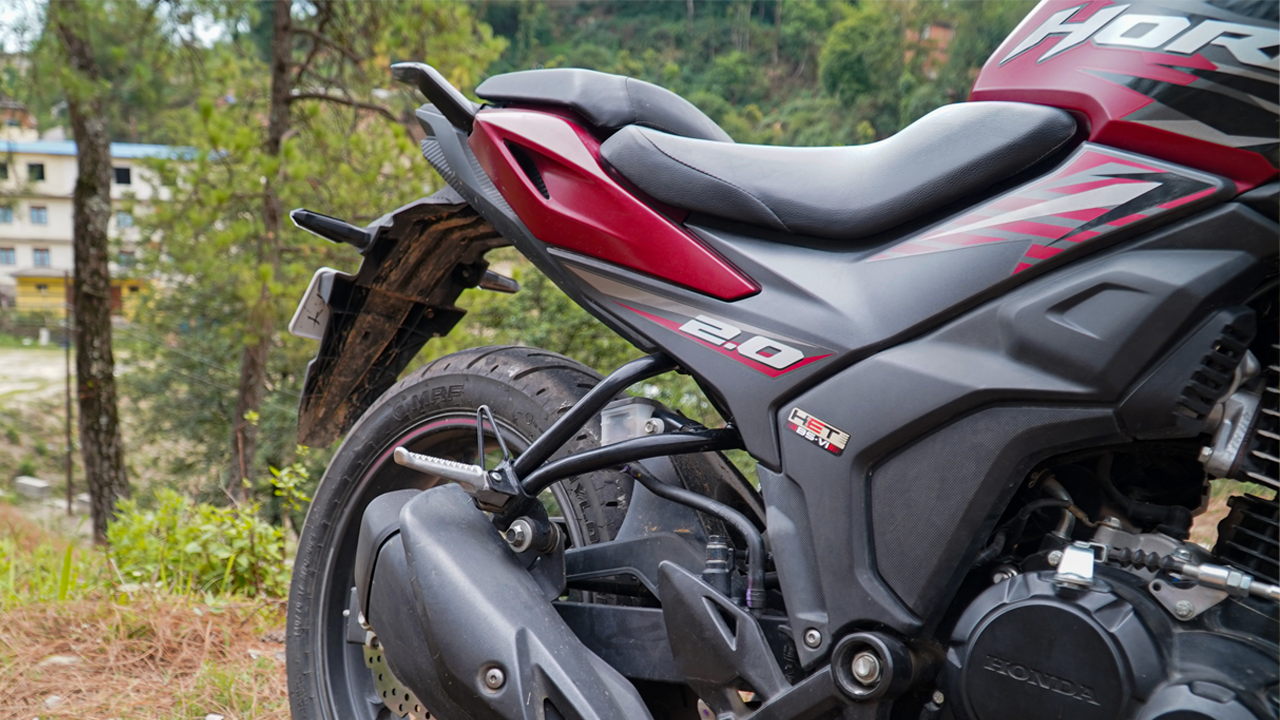
Honda Hornet 2.0 will be available in four color options: Black, Grey, Blue, and Red.
Performance
Honda Hornet 2.0 is powered by a 184.40cc, 4-Stroke, Air-cooled, FI Engine. It generates a max power of 17.26PS at 8500 rpm and a max torque of 16.1Nm at 6000 rpm.
Moreover, it is mated to a 5-speed gearbox with a 12-liter fuel tank capacity.
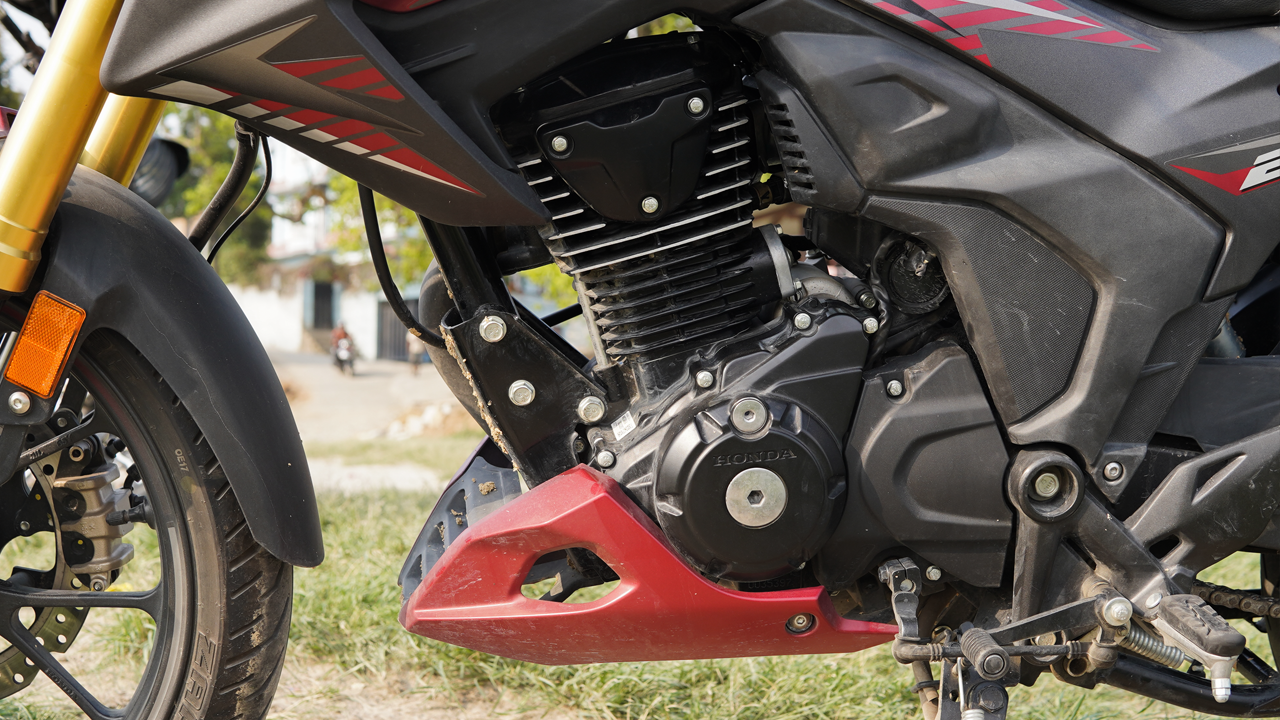
This is a BS6-compliant FI engine.
Being the earliest iteration of the Hornet 2.0 BS6, it misses out on Side Stand Engine Cut Off.
The “Engine Cut Off” feature is present in future Hornet 2.0 iterations, just not the ones available for the Nepali market.
One key interesting point to note is its Hornet 2.0 name tag.
The Hornet features a 180cc engine, not a 200cc one. It is just an increase of 22cc from the Hornet 160R.
Why did they do this?
I think Honda looked at the outgoing Yamaha MT15 and saw its sales dominance in the sporty commuter segment.
The MT 15 popularity played a certain hand in defining the next generation of Hornets as a new premium sports commuter.
Rather than going to the 200cc-250cc, the Hornet 2.0 raised its displacement to stay and compete against Yamaha’s sporty commuter category.
So, did it work?
We will tackle this topic in the Battle of Competition section.
Additional Details
The dimensions are 2047 mm in length, 783 mm in width, and 1064 mm in height. Moreover, the wheelbase is 1355mm.
There is a minor increase in both ground clearance and kerb weight, an increment of 3mm and 2 kg respectively.
Honda Hornet 2.0 gets a 167 mm ground clearance. And, the kerb weight sits at 142kg.
Interesting Features
Honda has updated the feature list considerably for the Honda Hornet.
While it is a considerable upgrade compared to the older Hornet, the newer iteration still misses out on a few features to save costs.
Is cost-cutting justified? Let’s find out!
Braking Performance
Honda Hornet 2.0 features Dual-Disc Brakes with Single-Channel ABS. Both the front and rear brakes are equipped with NISSIN Brake calipers.
It requires minimal effort to bring the Hornet from high speed to a complete halt. It is very confidence-inspiring, making riders feel in total control.
Color me impressed!
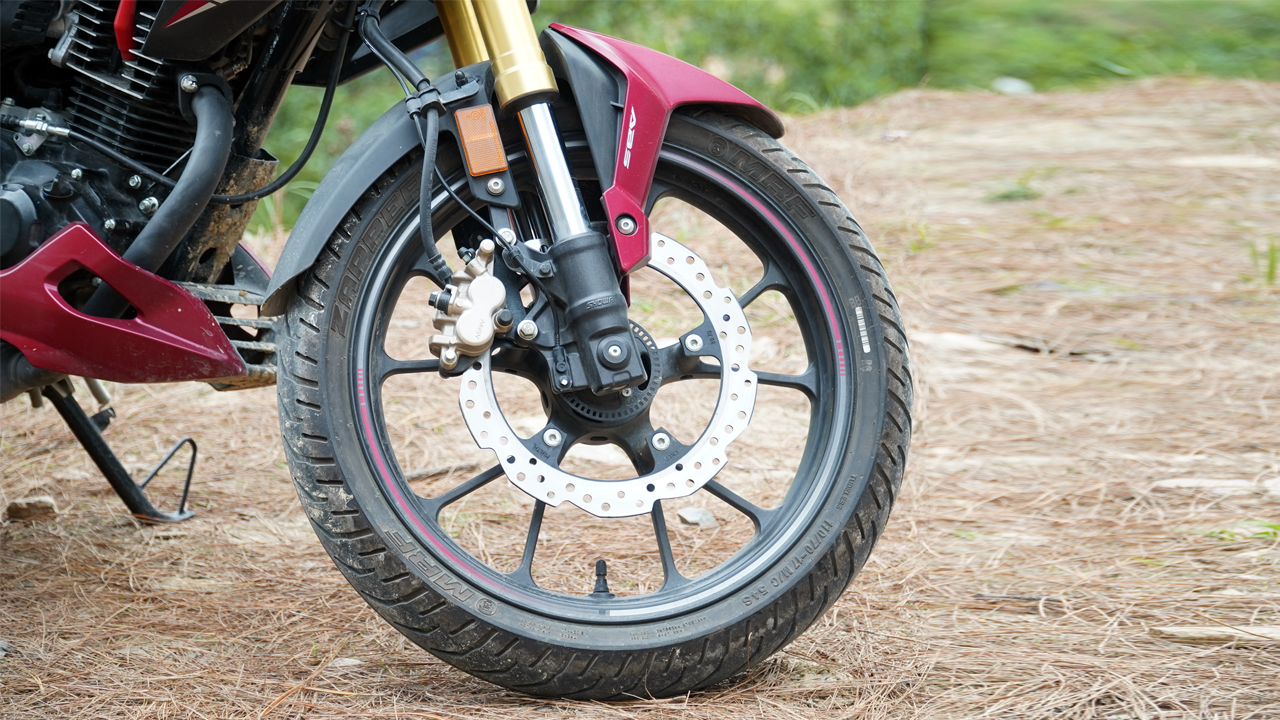
Honda held back a bit by giving it a Single-Channel ABS instead of a Dual-Channel.
If the Hornet had an aggressive price tag, the Single-Channel ABS would have been a justified sacrifice.
Yes, the Single-Channel ABS also does its job well.
But that’s not the point!
All bikes at this price point include Dual-Channel ABS as standard. Cutting corners on something so important makes no sense at all!
Tyres
Similarly, the Honda Hornet 2.0 gets a wider front tyre. These are 17-inch tyres, 110/70-section at the front and 140/70-section at the rear.
The road grip and cornering capabilities have improved.
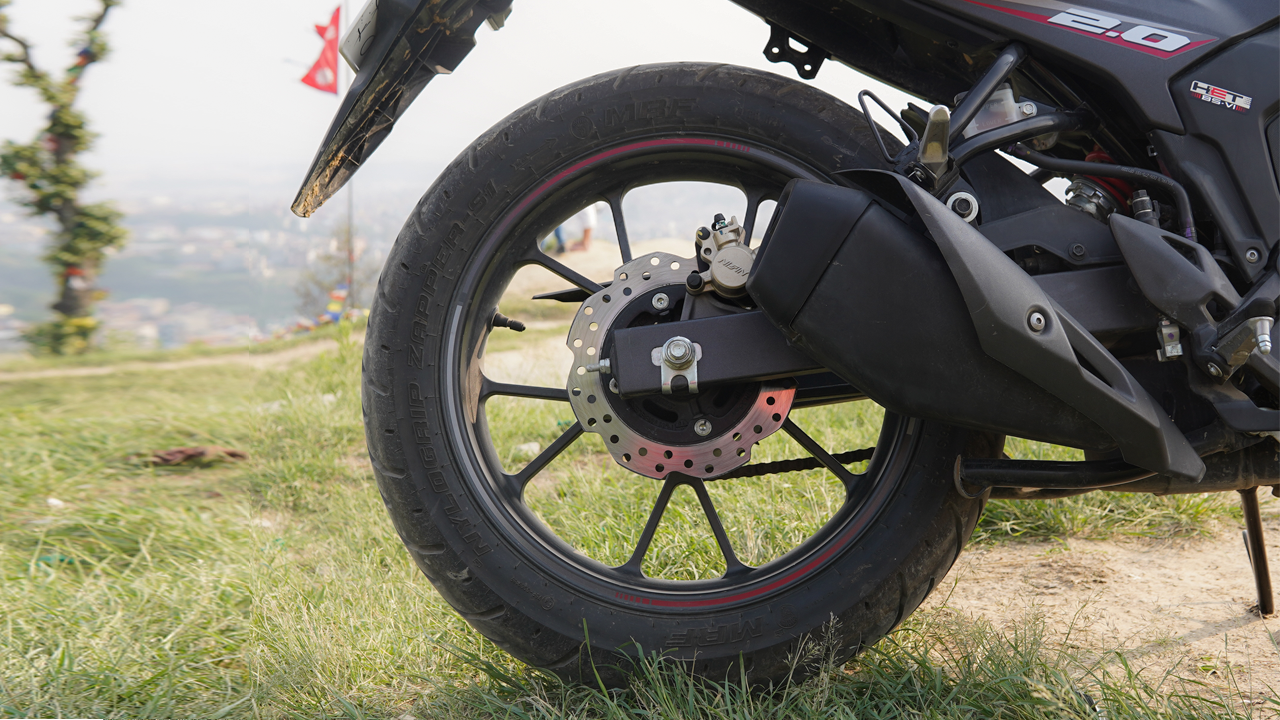
It could have gone the extra mile in terms of cornering, but Honda held back on the Radial tyres.
The lack of radials isn’t big, but it highlights the few weaklings present in the Hornet.
Suspension
Coming to the suspension setup, the Hornet 2.0 gets a Showa Upside-Down Fork at the front and Mono Shock at the rear.
The on-road suspension feel is on the stiffer side. It reacts to even minor bumps in the real world but continues to hold an excellent riding experience.
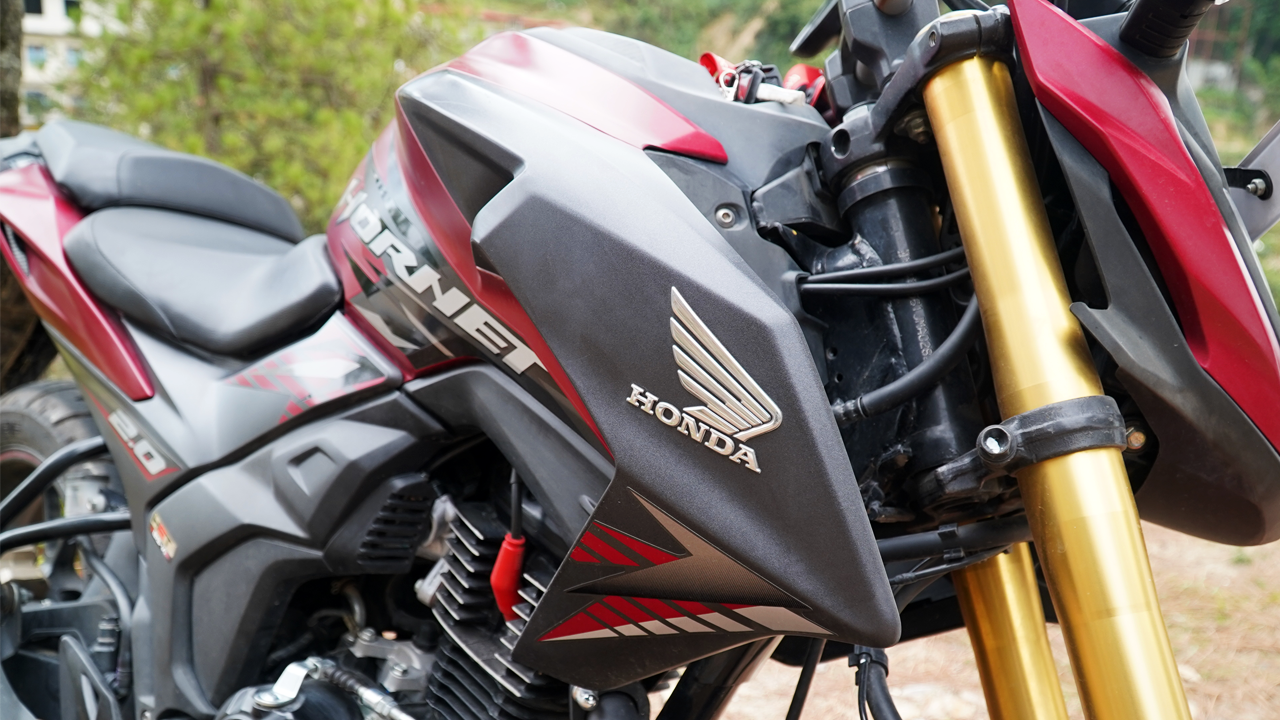
It performs marvelously on the city roads.
However, that changes in the Off-Road conditions. The suspension experience is just too stiff on bad roads.
It is tolerable, but not enjoyable.
This is a premium setup, so this kind of experience was expected.
Seat Comfort and Pillion
Honda Hornet 2.0 has a comfortable seat.
The riding stance is exactly like the Hornet 160R, but more improved. The leg reach is very friendly to short-height riders.
Plus, the riding position is a bit more upright than before.
It does an excellent job of maintaining stress-free riding posture on both streets and highways.
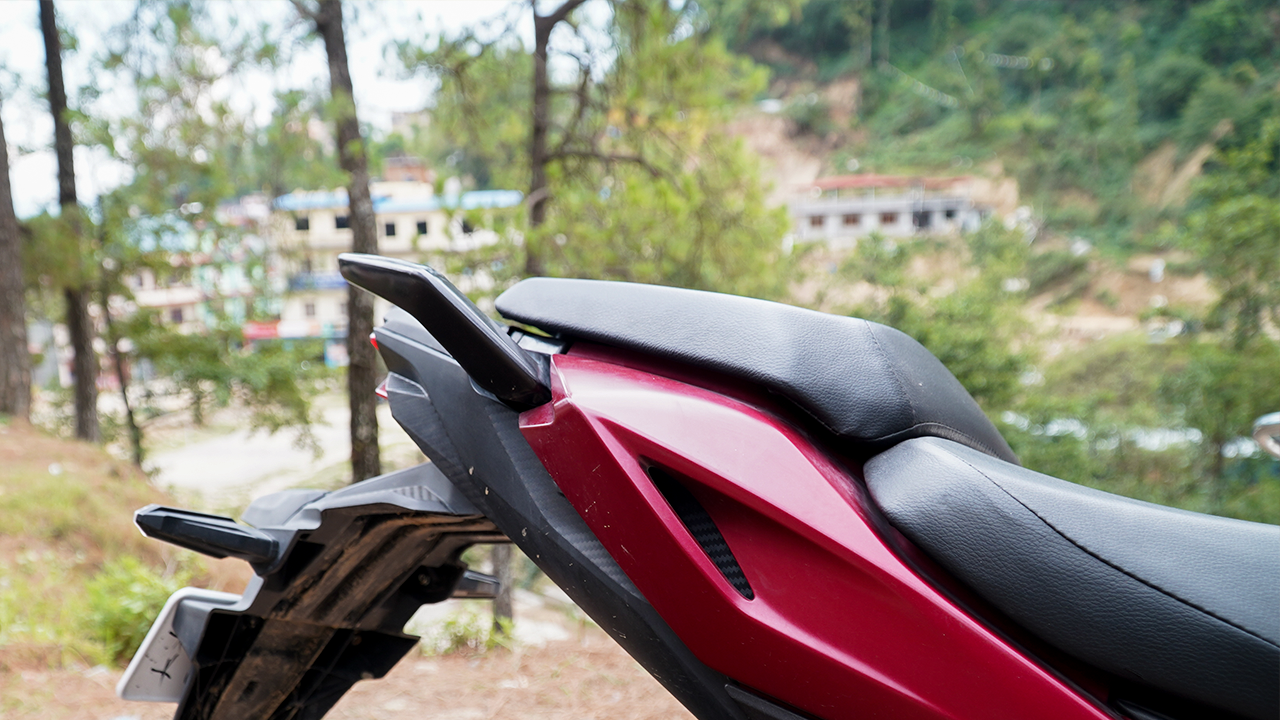
Like the suspension setup, the seat is a bit stiffer. It works great on short rides, but quick breaks are necessary on longer rides.
Fuel Tank Capacity and Mileage
Honda Hornet 2.0 gets a 12-liter Fuel Tank Capacity.
After real-world testing, we managed to get around 38-40 Kmpl. Riders can achieve more than 40 Kmpl with more economical riding.
It should give 456-489 km on a full tank.
LCD Display
Honda Hornet 2.0 sports a Fully Digital Instrument Meter.
It provides informative information like Gear Position Indicator, Odometer, Twin Trip Meters, Battery Voltmeter, and more. Plus, the screen brightness can be customized across 5-levels.
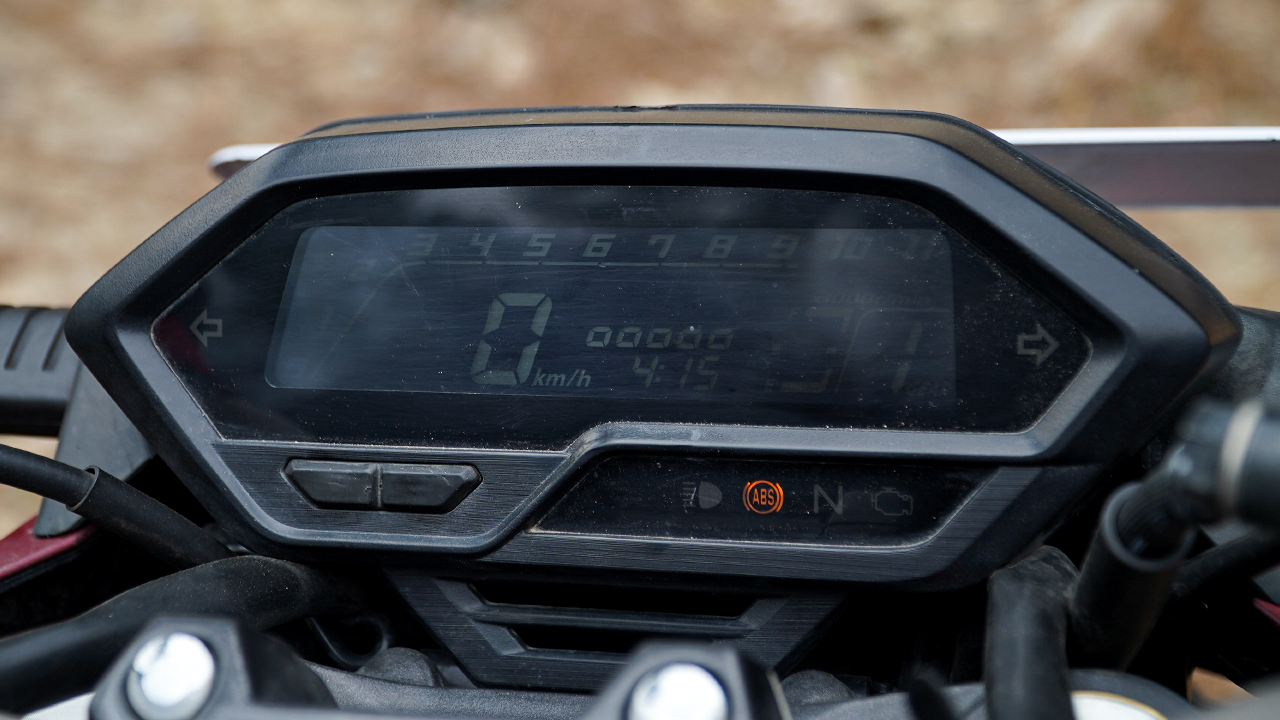
But, it misses out on Bluetooth Connectivity.
With that, it misses out on onboard Navigation and Smartphone Connectivity options.
Nevertheless, the existing information caters nicely to the riders.
However, it could have included other useful information like Average Fuel Mileage, Real-Time Fuel Mileage, and Expected Range.
Honda Hornet 2.0 Features Highlight
- 180cc BS6-compliant FI Engine
- New Street-Fighter-Themed Design
- New LED Headlamps with X-Shaped LED Tail Light
- LED Indicators (1st in Segment)
- Muscular Fuel Tank
- Sporty Engine Cowl
- New Digital LCD Meter with 5-level Illumination Control
- Split-Seat with Stress-Free Riding Posture
- Refined HET Engine with Best-in-Class Mid-range Torque
- Key on Tank
- New Engine Stop Switch
- New Hazard Light Switch
- USD Front Forks (1st in Segment) and Monoshock Suspension
- Dual Disc Braking
- Single-Channel ABS
My Experience with Honda Hornet 2.0
Refined Performance
Let’s talk about real-world experience!
While it is disappointing to see Honda bump up the engine displacement to just 184cc, the level of work put into the engine refinement is great!
The new engine rides similarly to the Hornet 160R. But the higher displacement ensures that the engine has more room to breathe.
Plus, the engine refinement is a step up, providing minimal vibrations. Despite the weight increase of 2 kilos, the bike feels lighter, agile, and responsive.
Hornet 2.0 is all about the mid-range torque!
Adding to that, the redesigned tank profile and lower seat height make the ride more friendly and more engaging.
As expected, the bike loses its refinement past 7000 rpm.
Going past the rev range, the vibrations slowly creep into the handlebar and tank panels. However, those vibrations are simply minor annoyances, but not irritating.
All in all, the Hornet 2.0 is a rev-happy engine.
It is a true city bike, making tedious commutes super fun! It cuts through the city traffic like a sharp razor, creating a good balance between practicality and functionality.
Moving on, the center of gravity is yet another Hornet 2.0 highlight.
The bike doesn’t waiver its stability regardless of its riding speed, fast or slow. The rider will be in control all the time thanks to its superior center of gravity.
This is the most noticeable improvement over its predecessor.
However, Honda has yet to iron out all of its imperfections as there is still room for improvement in highway performance.
The 184cc engine fails to punch out a satisfying top-end performance.
Honda could have solved this performance by pushing into the 200-250cc engine displacement or the inclusion of Variable Valve Actuation (VVA).
Unfortunately, this is neither.
If your commute focuses largely on the city and less frequently on highways, then look no further.
Honda Hornet 2.0 has got your back!
It sets a good example by making commuting fun! It excels in most areas, but also lacks in some. More importantly, the balance stays at an equilibrium.
Shortcomings
That being said, Honda could consider improving two aspects to enhance its offering and performance.
Gearbox and Cooling System.
Honda has opted for a 5-Speed Gearbox.
There is no specific con to using this specific configuration. But, it comes across as a bare minimum.
There is no Assist & Slipper Clutch.
Even if Honda decides to skip out on that to keep costs low, it should have at least gone with the 6-Speed Configuration.
The same can be said about the Cooling System.
Liquid Cooling would have been the obvious choice here. Even if the idea was to keep costs down, then Oil-Cooling would have been the next good alternative.
Instead, Honda skipped out on both by going with an Air-Cooled System.
What if the engine was Liquid-Cooled instead of Air-Cooled? What if the gearbox had the extra sixth?
Yes, both the Air-Cooling and 5-Speed Gearbox gets the job done. But, just imagine what the new Hornet 2.0 would have been if Honda didn’t hold back.
Battle with the Competition
Honda Hornet 2.0 rivals the Yamaha MT 15.
The popularity and market share of the Yamaha MT 15 as a premium sports commuter are well-known.
Even Bajaj introduced Bajaj Pulsar N160 to take aim at that market share. Similarly, Honda wanted a piece of that pie.
So, they repositioned Hornet 2.0 as their new premium sports commuter.
While that strategy looked great on paper, it simply doesn’t work in the real world.
Especially when Honda Hornet 2.0 took the cost-cutting route, but went with the premium price tag anyways. It worked for Bajaj because the Pulsar N160 did similar cost-cutting, but offered it at a justified price tag.
Conclusion
Honda Hornet 2.0 is an excellent successor to the Hornet 160R.
If 160R was great, then 2.0 is greater!
Ultimately, the problem boils down to its asking price. It gives a new and improved package for just Rs. 4.98 Lakhs. But also misses out on bare necessities for the sake of cost-cutting.
If the price had been set slightly low (or perhaps a bit more aggressive), maybe that would have been justifiable enough.
Unfortunately, that is not the case.
And, the stigma of being overly expensive continues to stay relevant even to this day.
That is disappointing because the Hornet 2.0 is surprisingly well-put.
It gets a lot of things right. It is fast, agile, and responsive. However, the high asking price continues to steal its thunder.
This is the Full Review of the Honda Hornet 2.0.
-
TechLekh Awards: Best Cars of 2025 in Nepal Winners!Electric vehicles continue to dominate Nepal’s market in 2025, and Chinese manufacturers still lead the…
-
Suzuki Victoris Nears Launch in Nepal: Easy to Live With, Harder to Get Excited AboutHIGHLIGHTS Suzuki Victoris price in Nepal is expected to be between Rs. 50–60 Lakhs. It…
-
Nothing New Year 2026 Offer: Free Headphones, Watch, Buds & More on Select PhonesHIGHLIGHTS Nothing is offering free accessories on the purchase of select Nothing and CMF smartphones.…


